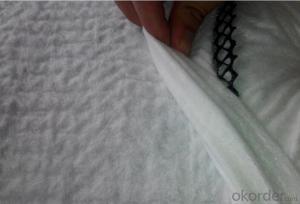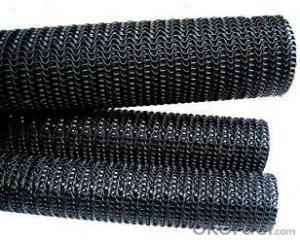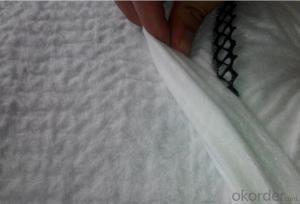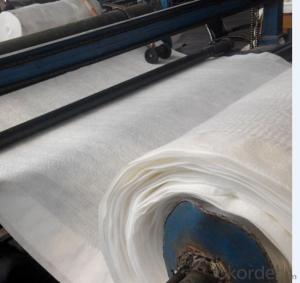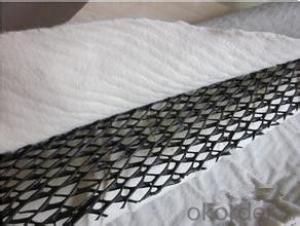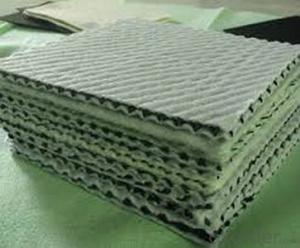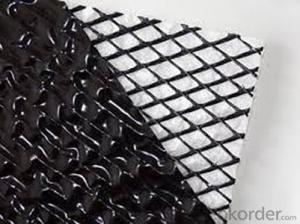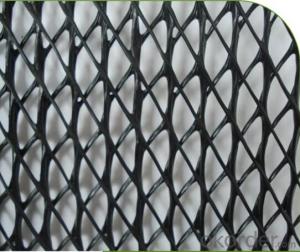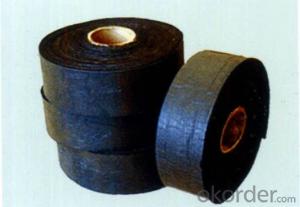Geocomposite Drainage Geonet Liner HDPE
- Loading Port:
- Qingdao
- Payment Terms:
- TT OR LC
- Min Order Qty:
- 2000 m²
- Supply Capability:
- 200000 m²/month
OKorder Service Pledge
OKorder Financial Service
You Might Also Like
Three-dimension Composite Drainage Network Introduction
Geonet can be used in the soft soil stabilization, base reinforcement, embankments over soft soils, seacoast slope protection and reservoir bottom reinforcement, etc
It prevents the slope rock from falling down ,which avoids the hurt to the human beings and the vehicle on the road; It prevents the road dregs packed by geonet from being washed away ,avoids the roadbed distortion and improves the stability of the roadbed; laying the geonet reinforces the road surface ,avoids development of the reflection crack. As reinforcing material of filling soil in retaining walls, it disperses the earth body stress and restricts the side-displacement. The stone cage, made of geonet, can prevent erosion ,collapsing and lost of water and soil when being used in dyke and rock slope protetion
Specification
Geonet thickness: 5-8mm; Width: 2-4m; Length as requested
Geotextile can be needle punched polyester geotextile, continuous filament PET nonwoven geotextile or Polypropylene nonwoven geotextile, and the unit weight normally 200g/m2.
Features
1. Excellent drainage function, able to bear long time high pressure load
2. High tensile and shear strength
3. Able to protect its long time and stable hydraulic conductivity
4. Able to bear more than 2000kpa compression load, its anti-pressure capacity much higher than common drainage network
5. Corrosion resistant, acid and alkali resistant.
Application
Landfill drainage; Roadbed and road drainage; railway drainage; tunnel drainage; underground structure drainage; the retaining back wall drainage; garden and sports ground drainage.
Geonet is made of HDPE and anti-ultraviolet additives
1. Anti-aging, corrosion resistance
2. Highway and railway subgrade: effectively distribute load, improve its bearing capacity and stability and prolong service life
3. As layer of highway slope so that geonet can prevent landslide and protect water and soil, and beautify the environment
4. In reservoir and rive dykes to effectively prevent landslide; in the coastal engineering because of its soft good toughness, corrosion strong characteristic to buffer wave swept and corrosion
FAQ
1. Which payment do you accept?
For you convinience,our payment can be L/C,TT
2. Is free sample available?
We can supply free samples if you need.
3. How about your quality?
We have strict quality control system, we make testing on incoming raw material and finished products. Your third party testing is also welcomed. With high quality, our products are used on government projects at home and abroad. Our product quality is accepted by clients from all over the world
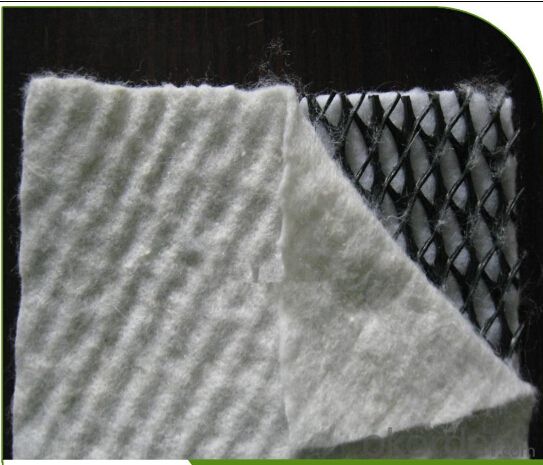
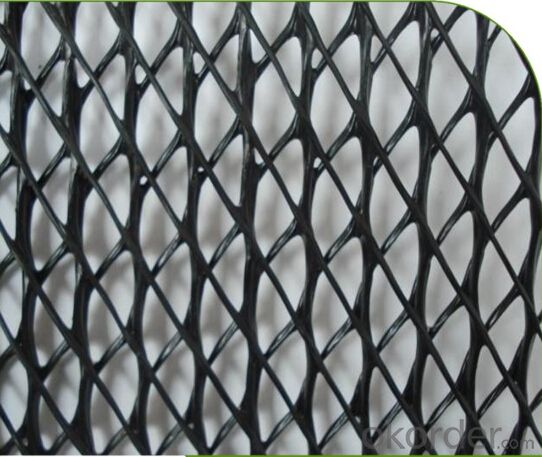
- Q: How can sediment control products help in construction sites?
- Sediment control products can help in construction sites by effectively managing and reducing the amount of sediment runoff. They act as barriers or filters, preventing sediment from being carried away by stormwater runoff and contaminating nearby water bodies. These products, such as silt fences, sediment basins, and erosion control blankets, help in complying with environmental regulations, protecting water quality, and minimizing soil erosion. By utilizing sediment control products, construction sites can mitigate environmental impacts and maintain a more sustainable approach to construction.
- Q: How is it related to civil engineering?
- From the narrow sense of the definition, civil engineering is equivalent to civil engineering, that is, construction (or structural engineering) this small range.
- Q: Are there any earthwork products specifically designed for golf course construction?
- Yes, there are earthwork products specifically designed for golf course construction. These products include specialized soil mixes, turf reinforcement mats, drainage systems, and golf course construction equipment.
- Q: How do silt fences prevent sediment runoff?
- Silt fences prevent sediment runoff by acting as barriers that intercept and trap sediment-laden water flow. The fence, made of geotextile fabric, allows water to pass through while retaining the sediment. This helps to filter and separate the sediment from the runoff, preventing it from entering waterways and causing pollution.
- Q: How do geocomposites help in drainage systems?
- Geocomposites help in drainage systems by providing effective and efficient water management solutions. They are designed with a combination of geotextiles and geonets, which allow for the quick and efficient removal of excess water from the soil. These composite materials enhance the drainage capacity of the system by preventing clogging, distributing the flow of water evenly, and filtering out any potential contaminants. Geocomposites also help in preventing soil erosion, maintaining the stability of the drainage system, and prolonging its lifespan.
- Q: How do geosynthetic erosion control products prevent soil loss?
- Geosynthetic erosion control products prevent soil loss by providing a physical barrier that stabilizes the soil and prevents it from being washed away by water or wind. These products, such as geotextiles or geogrids, are designed to be durable and resistant to environmental conditions. They help to distribute the forces exerted by water or wind, reducing the impact on the soil and preventing erosion. Additionally, they promote vegetation growth by acting as a filter, allowing water infiltration while retaining soil particles. Overall, geosynthetic erosion control products play a crucial role in protecting soil and preventing its loss in various applications, including construction sites, highways, and slopes.
- Q: What are the different types of geotextile fabrics available?
- There are several types of geotextile fabrics available, including woven geotextiles, non-woven geotextiles, and knitted geotextiles. Woven geotextiles are made by weaving individual threads together, while non-woven geotextiles are manufactured by bonding fibers together through a mechanical or chemical process. Knitted geotextiles are produced by interlocking loops of yarn. Each type of geotextile fabric has its own specific characteristics and applications in various civil engineering and environmental projects.
- Q: Are earthwork products suitable for road construction?
- Yes, earthwork products such as soil, gravel, and rocks are commonly used in road construction. These materials are suitable for building and stabilizing road surfaces, creating embankments, and constructing drainage systems.
- Q: What are the advantages of using geosynthetic erosion control blankets?
- Geosynthetic erosion control blankets offer several advantages, including providing immediate erosion protection, reducing sediment runoff, promoting vegetation growth, enhancing slope stability, and being cost-effective and easy to install.
- Q: Material science and civil engineering which is better?
- Definitely civil engineering is good
Send your message to us
Geocomposite Drainage Geonet Liner HDPE
- Loading Port:
- Qingdao
- Payment Terms:
- TT OR LC
- Min Order Qty:
- 2000 m²
- Supply Capability:
- 200000 m²/month
OKorder Service Pledge
OKorder Financial Service
Similar products
Hot products
Hot Searches
Related keywords

